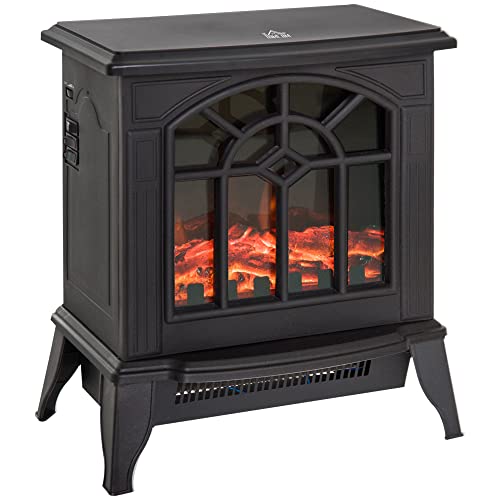
Fireplaces And Stove
Add a review FollowOverview
-
Sectors Restaurant / Food Services
-
Posted Jobs 0
-
Viewed 1194
Company Description
10 Things We Do Not Like About Fireplace
What Are Fireplace Accessories?
 Fireplaces are central to many homes they provide warmth and comfort all day and at night. They also provide beauty and value to the property.
Fireplaces are central to many homes they provide warmth and comfort all day and at night. They also provide beauty and value to the property.
If your fireplace requires to be repainted or just basic repairs, these projects can be done by homeowners. Certain jobs requiring gas services are best left to the professionals.
The Hearth
The hearth is a noncombustible surface that is used to surround a fireplace or wood-burning stove. It could be a raised area or just the foundation of the fireplace. The term “hearth” is used to describe all the components of the fireplace, such as the firebox, the raised floor and mantel, as well as the chimney, is a common term. It is nevertheless important to note that there are strict fire safety guidelines regarding how the fireplace and its accessories should be built, so please contact your local authority for more information.
Hearths are usually made of stone, brick or cement. They can be an important focal point in any room. They are designed to protect against accidental fires that may be caused by stray embers or even logs. They also provide a space for storing fireplace tools as well as wood and other materials.
Archaeological research points to the importance of hearths as the central to early human existence. Many believe that hearths supplied food, light, warmth, and protection.
Although a hearth can provide numerous benefits, it could cause serious health problems in the event that it is not properly maintained. Smoke inhalation can increase blood nitrogen levels, which prevents red blood cells (methemoglobinemia) from delivering oxygen into the tissues. At high concentrations it may cause nausea, dizziness and loss of consciousness.
Hearths were traditionally constructed of rock but they are nowadays constructed of concrete or brick and can come in a variety of shapes and sizes. Some cooking fireplaces have hearths that extend over the whole wall while others are smaller, purely decorative features that are only covering the the fireplace opening. The material used to make a hearth has a great impact on its appearance and cost as well as resistance to heat.
The Surround
A fireplace surround (also called a mantel) is the frame that sits above the hearth, fireplacesandstove.com and is a part of the atmosphere of the room. Besides its aesthetic value, it is also a functional element as it keeps combustible materials away from the fireplace and reflects heat from the room. It can also serve as a shelf to display household items such as mirrors or paintings.
There are a variety of options based on the size and type of the fireplace. Certain surrounds are not combustible, and others must be in compliance with federal and local fire codes in regards to clearance distances from items that are combustible.
Some of the most popular choices for the surround include stone, brick and concrete. Certain stone surrounds are carved with attractive features like bevels or bolection moulding. The stone surrounds could also have plinths or cornices. These details can give a home a more sophisticated look that complements its style.
Plaster is another option. This material can be made from a mix of cement and sand, then finished to match any architectural design. A plaster surround, for instance can go well with the look of a Mission style house.
The last popular choice for an interior fireplace surround is tile. This material is available in a myriad of patterns and colors. It can be used as an accent to the surround or spread over the whole wall for a dramatic focal point. It is a fantastic option for homes that have modern style.
The surround is among the first things that guests see when entering a living space. For this reason, it is crucial to select an item that sets the tone of your room and enhance your home’s value.
The Firebox
The firebox is the space behind the fireplace’s opening, where the fire can be constructed and maintained. The firebox is usually covered by a chimney, allowing smoke to escape. The majority of these traditional structures burn wood, but they can also burn gas such as natural gas or propane.
No matter what kind of fuel you choose to use, the firebox is the location where the combustion takes place and needs to be properly maintained for safety and effectiveness. The grate in the hearth, a fire poker and an air damper are all important parts of the firebox for efficient operation.
It is important to clean your fireplace regularly. This includes maintaining the firebox in good shape and its lining. The inside of the fireplace will be soiled by dust and soot due to its continuous exposure to high temperatures. To do this, you can make use of wire brushes or a scraper to get rid of the caked on soot and ash.
For durability and long-term longevity It’s an excellent idea to line the inside of your firebox with steel slag. These types of metals resist corrosion and will not rust. They also offer an even heat distribution, which will last longer.
You can also make your fireplace with decorative fire logs and lava stones. Some people opt for modern-looking decorative glass instead. Be sure that whatever you’re using in your fireplace is UL approved for safety. This includes not only the fireplace itself, but also any decorations and accessories you’re adding to it.
The Burner
Burners are a common way to add warmth and style to any space. They are available in various sizes and shapes which makes it easy to locate the perfect burner for your home. Some are even equipped with remotes, so you can control the flame from anywhere in the room. Fire-burners can be used indoors as well as outdoors, since they are safe.
There are many types of burners. Each has its own pros and cons. Some are more expensive, but they all offer a range of benefits. Some are safer than others, and can be used without or with chimneys. No matter what type of burners you choose ensure that you follow the directions included in the manual. This will ensure the burner is properly installed and is in compliance to all local and state laws.
Burning wood is a traditional method of enjoying your fireplace, but it’s not always practical. Apart from the fact that it’s messy and inconvenient as well as the smoke and soot it creates could be harmful for you and your family. Ethanol burners create water vapor, and extremely little CO2, which is more sustainable.
Another benefit of having a fireplace is that it can be beneficial in the event of a power outage. In winter, trees become weighed down by heavy snow and ice, causing them to fall and power lines below. You can use your fireplace to cook and keep warm in the event that the electricity is cut off in your home. This is a major plus for homeowners who want to be prepared for the unexpected.
The Flu
The flue is a tunnel inside a chimney which carries gases and smoke out of the house. It’s also a crucial element of a secure and efficient fire. A flue creates an updraft that draws air through the fire, allowing fuel to burn fully and reduces smoke.
The flue’s draft keeps the hot gases emitted from the fire from escaping into your home. Instead, they are carried out to cool. This regulated venting is what prevents carbon monoxide.
Your chimney needs to be inspected regularly to check for leaks and blockages. The flue pipe is a steel tube or duct that runs through the middle of the chimney, should be cleaned using specific cleaning chemicals and equipment. The metal brush, a drill equipped with a brick bit and masking tape are all needed to remove any tarnish or soot that has been stuck on the walls of the chimney flue pipe.
Close the flue when not using your fireplace to stop the conditioned air from venting out. This can also stop wind or rain from entering the fireplace and damaging the wood stove or gas furnace.
The damper, which is located at the bottom of the flue pipe, or flue tiles, and at the top of the fireplace is able to be closed or opened with a latch or handle. The damper is designed to keep the fireplace’s flue open while the fire is burning. However, it should be closed when the fireplace is not in use. This can help you save money on your energy bills.


